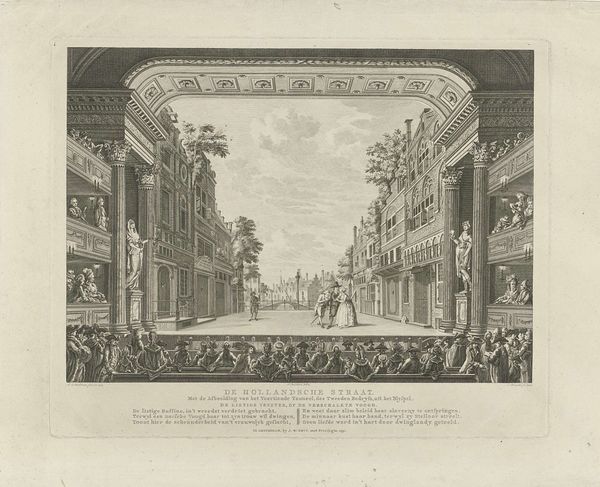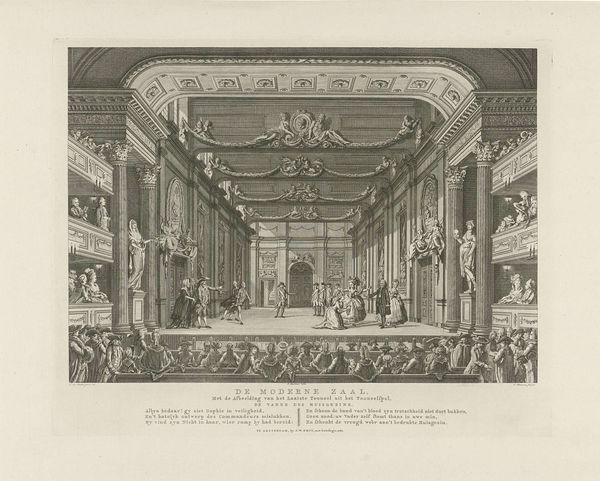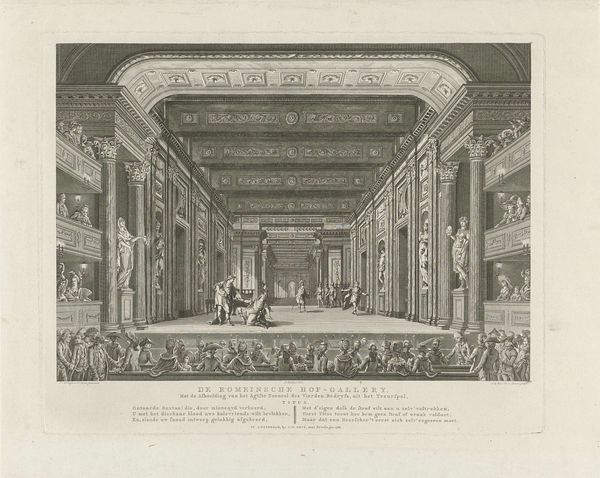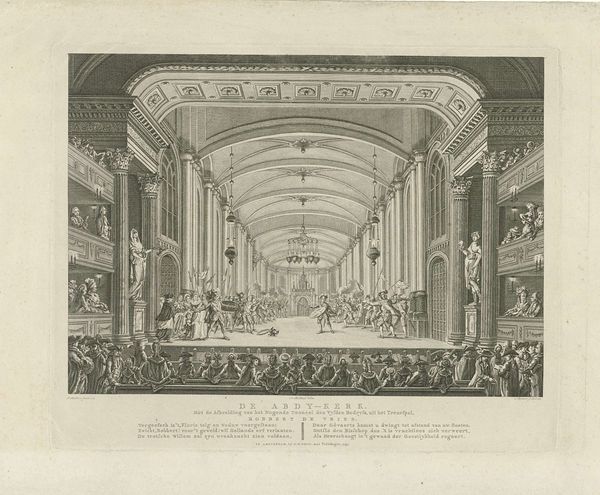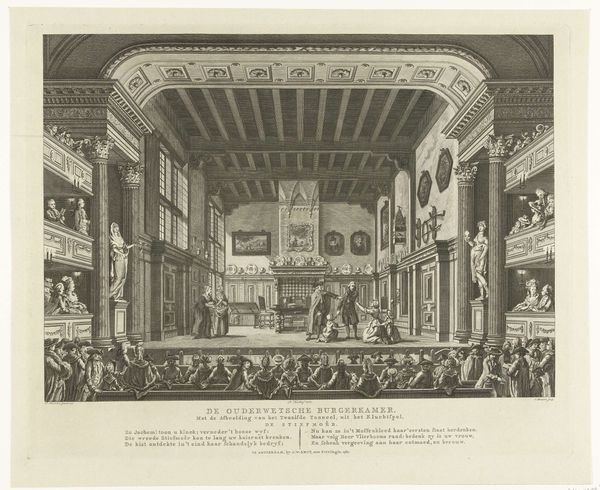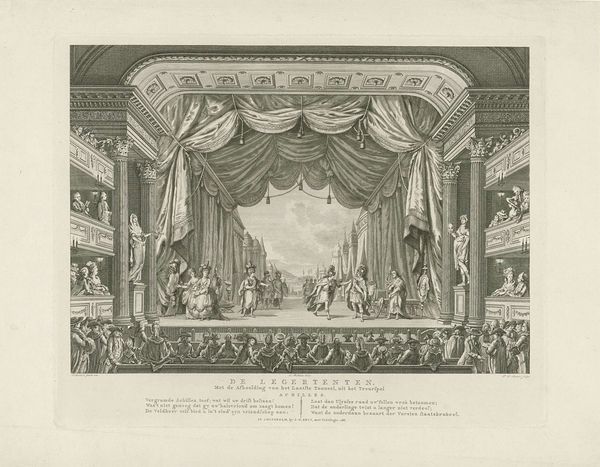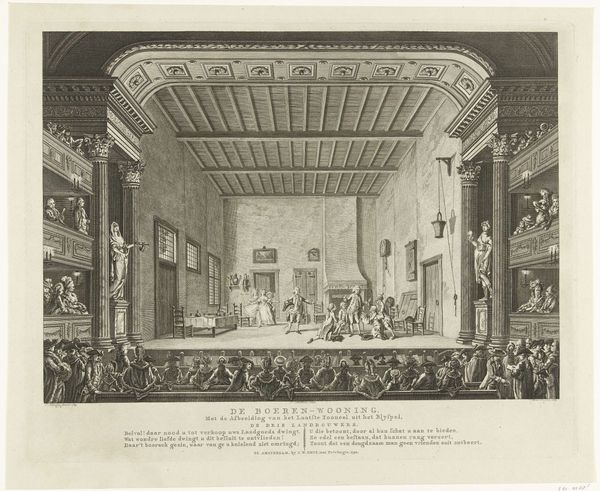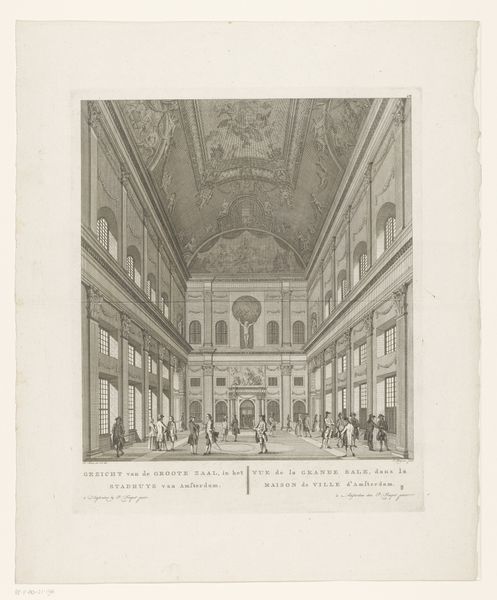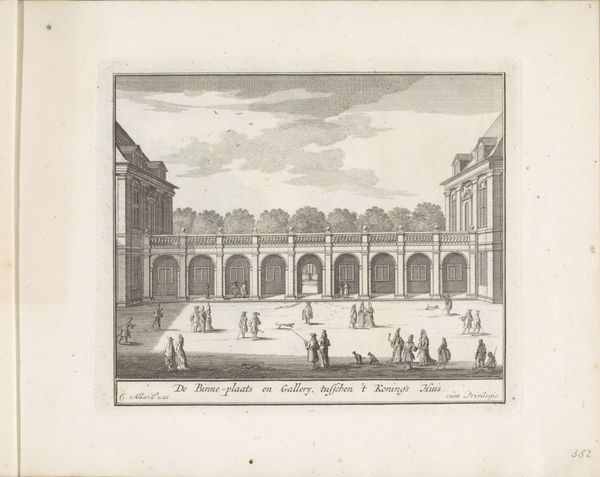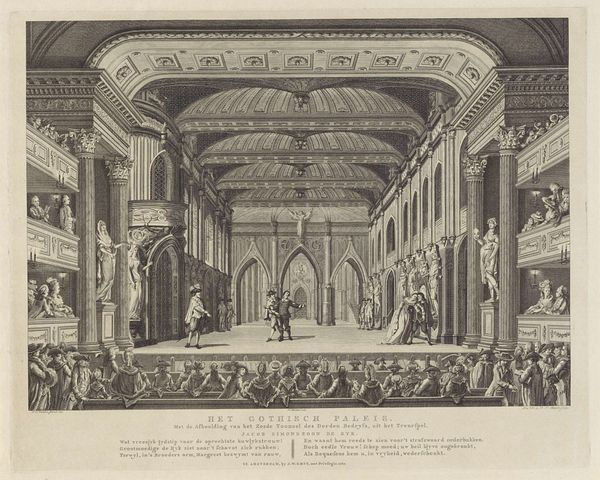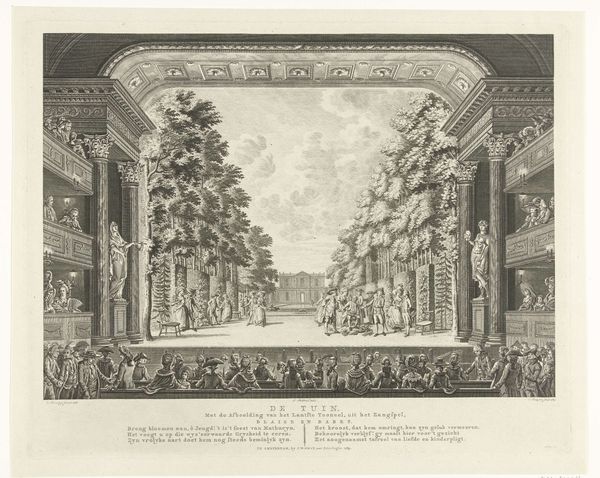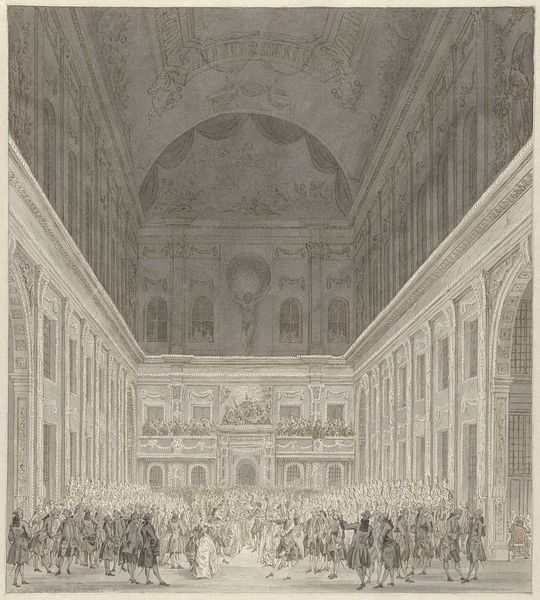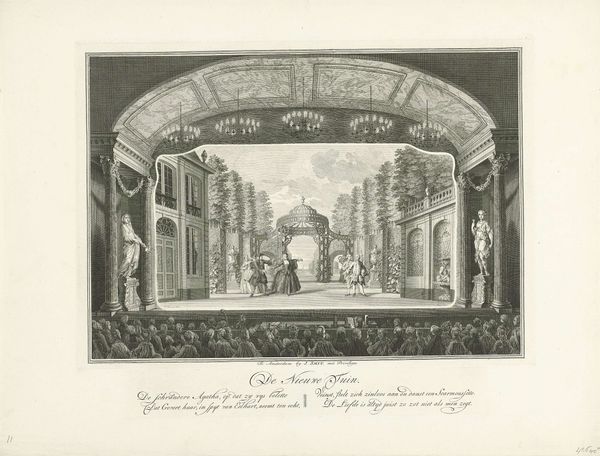
Dimensions: height 331 mm, width 418 mm
Copyright: Rijks Museum: Open Domain
Curator: This is an engraving from 1788 by Cornelis Brouwer. The work is titled “Schouwburg met toneeldecor: De Straat van Londen," which translates to "Theatre with stage design: The Street of London." It's currently housed here at the Rijksmuseum. Editor: The image is striking. It looks as though we, the viewer, are positioned within the audience of a play, witnessing not just a street scene, but also the performance unfolding. The overall tone feels very performative, as though every element is intentionally arranged. Curator: Exactly! Notice how Brouwer collapses the boundaries between the theatre's reality and the depicted "Street of London." It is important to understand the theatrical space itself as a social construct and question what ideologies are perpetuated through such performances. Editor: The symbolism certainly seems deliberate. The neoclassical architecture of the stage itself, framing the suggestion of London’s cityscape in the background…are those subtle representations of St. Paul's Cathedral? The piece gives us a very controlled and ordered vision. The arrangement with figures seems more like symbols rather than a vibrant slice of London life. Curator: Precisely. And we should analyze the intended audience for this piece. Who was meant to consume this idealized vision, and what cultural values were being reinforced through it? Brouwer was likely making a statement on London’s own burgeoning merchant power and its intersectional, gendered economy. Editor: It brings to mind ideas of "the gaze." Is Brouwer examining London as an outsider looking in? Also the costuming…It feels less like realistic garb and more about communicating certain archetypes that transcend London culture. It’s about ideas more than lived experience, it is archetypical. Curator: Absolutely. It asks critical questions regarding how national identities are constructed and commodified, which feels pertinent, even now. The power dynamics and class structures implicit in a spectacle like this –it still affects contemporary social and political realms. Editor: Seeing how theatrical stagecraft relies heavily on evoking and playing with those universally understandable cues really helps me rethink how cities, identity and historical period is sold as spectacle or symbols of something greater. Curator: Agreed. Thinking about performance in terms of cultural expectations is definitely what I will consider in more detail after our exchange. Editor: A similar point here. Next time, I hope to consider not just visual cues, but the larger structure supporting an event like the London stage or scene within.
Comments
No comments
Be the first to comment and join the conversation on the ultimate creative platform.
